Australia So Much to See
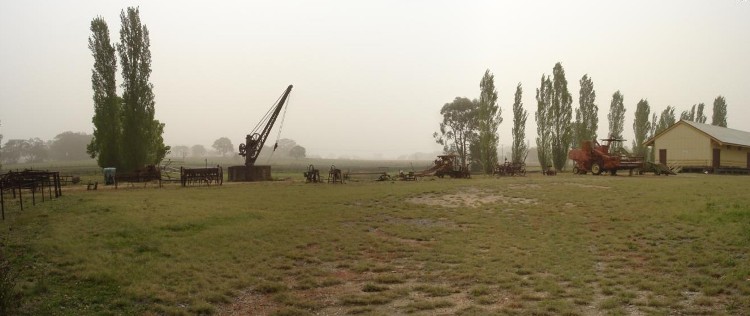

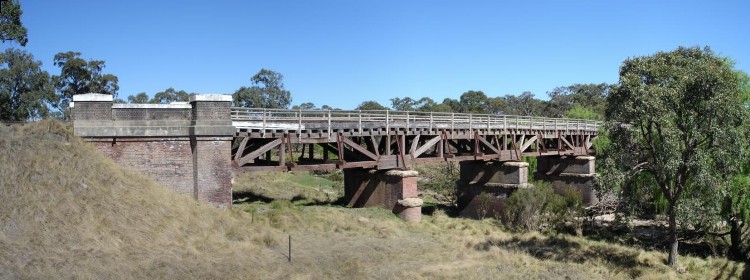

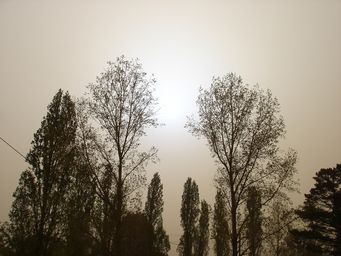
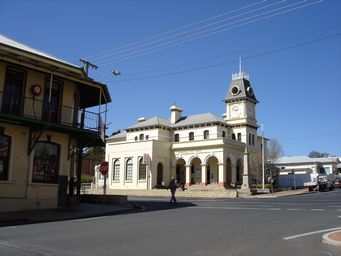
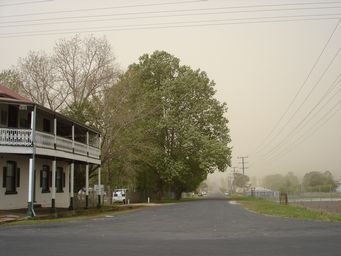
Tenterfield, New England Region, New South Wales
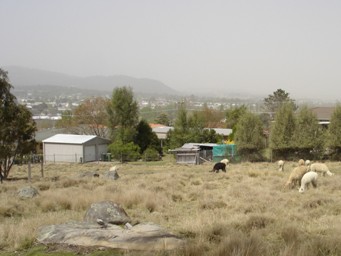
The owners have added
every possible homely touch to the amenities, with a well decorated bathroom which was faintly perfumed when cleaned each day. In
the laundry, pegs and laundry baskets were provided. The proprietress had a collection of knickknacks display in the lobby of the
Lodge, feeling like you are in a warm and welcoming home.
Whilst in Tenterfield, the second of two widespread dust storms struck. It was not the day to climb Bald Rock but was a day to stay inside. As the morning went on, the dust caused the hills around the town to fade completely from view. Photos here were taken when the storm was dying down, staying inside while the storm was at its peak, to avoid being sand blasted.
Across the road from the Tenterfield Lodge, along the disused railway line was a display of old equipment (below). The line ceased being used in 1989. A little further along the street is the 1886 built station building and the whole precinct is now operated as a railway museum.
Heading north on the Mount Lindesay Road
We chose to commute from the homely Tenterfield Lodge Caravan Park to National Parks
on day trips, rather than take the caravan to the Bald Rock campground as we had originally intended. We visited two National Parks
the day after the storm, leaving the more exposed climb at Bald Rock until the following day when the strong winds abated.
These remnants of World War II tank traps (at right) can be seen on alongside the Mount Lindesay Road. This is the area of the Brisbane Line which was to be the second line of defence if the Northern part of Australia fell into enemy hands. They are part of a barrier which spanned the bottleneck created by the Clarence River Valley.
Other remnants of Tanks Traps can be seen at a number of sites in New South Wales, including Belmont South and the Yooroonah Tank Barrier at 5809 Grafton Road, Ebor, Stockton Beach. Most of these are rows of concrete pyramids.
During the war, up to 10,000 troops were camped in the Tenterfield
district.
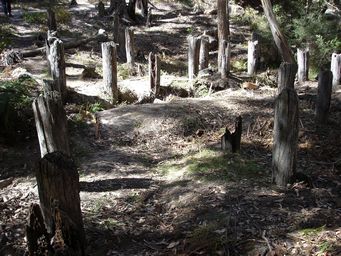
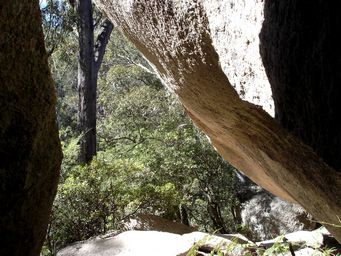
Frederick Wordsworth Ward, otherwise known as Captain Thunderbolt, was born in the early to mid 1830s. His extensive crime record states he robbed 25 mail coaches, 16 stations and residences, six hawkers, one toll-bar gate and stole 80 horses.
Thunderbolt’s Grave is located in Uralla’s Pioneer Cemetery, the headstone being erected by residents of Uralla as a memorial to Captain Thunderbolt but myth and mystery speculate just who, if anybody, is buried in this grave.
We visited a number of small natural rock shelters in the New England region, supposedly used by Thunderbolt to hide.
Twelve kilometres to the north of Tenterfield along the Mount Lindesay Road, this narrow shelter (above) is between leaning large granite boulders.
Ten kilometres to the south of Guyra is a tiny cave in a granite outcrop which Ward used as a shelter, whilst
the top of the outcrop gave a vantage point over the road nearby.